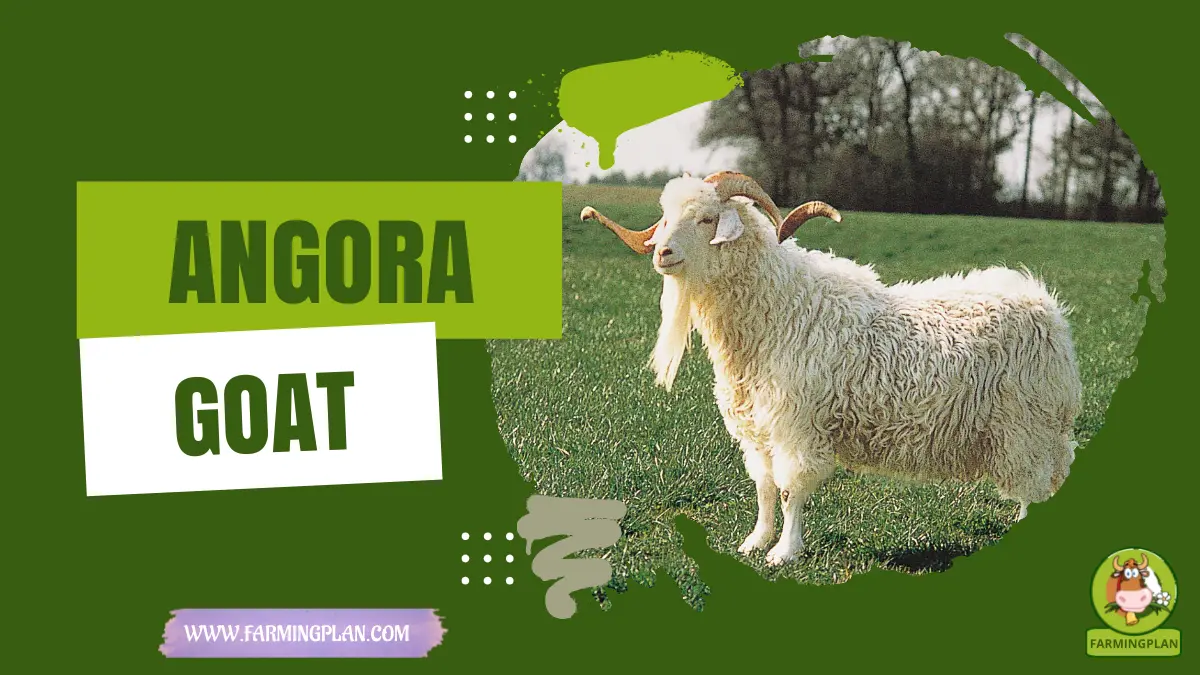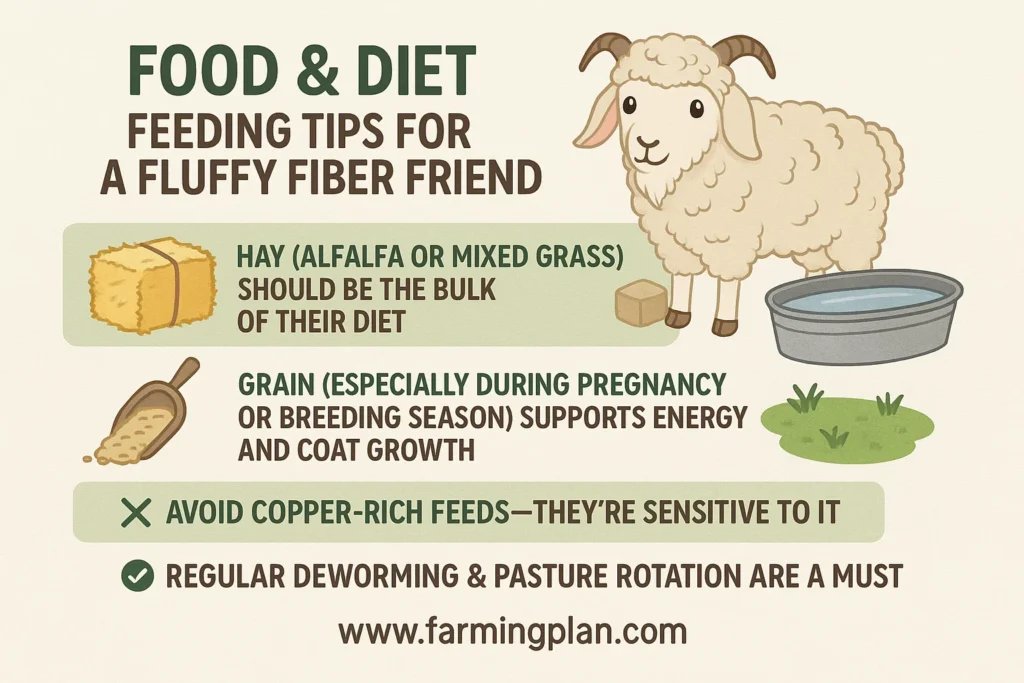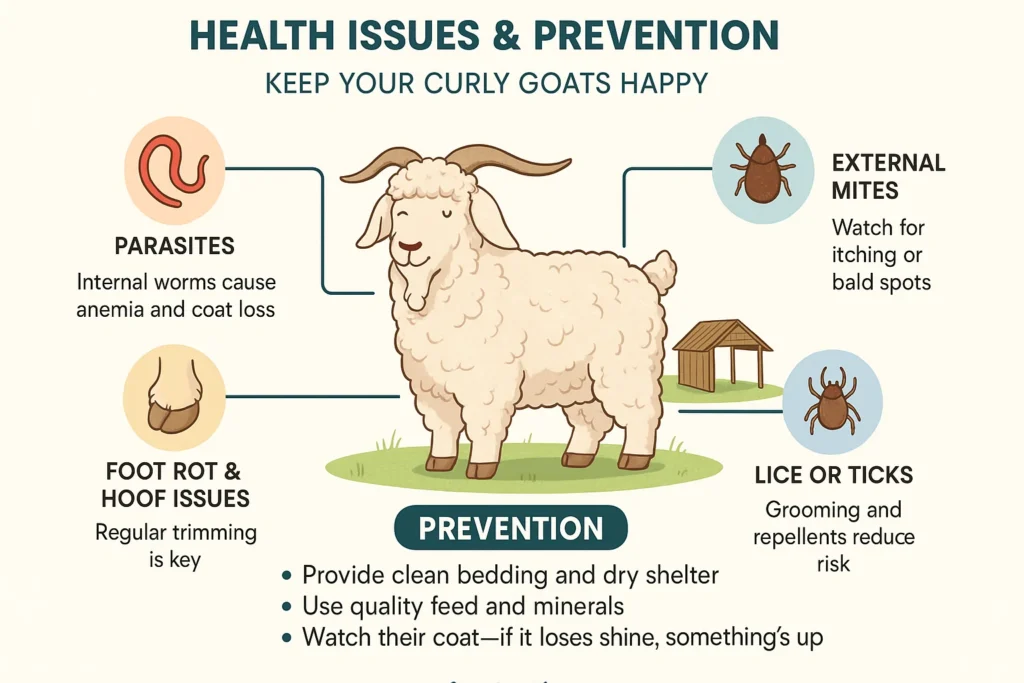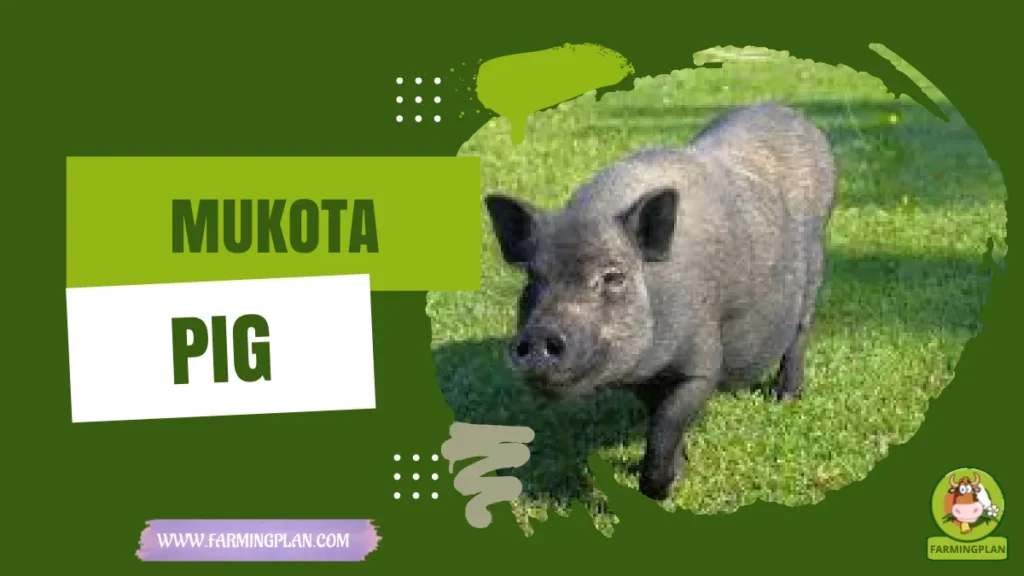If you’ve ever seen a fluffy goat with long, curly hair that looks like it’s straight out of a fairytale, chances are you’ve met an Angora Goat. These charming animals are famous for producing mohair, one of the world’s softest and most luxurious natural fibers. But it’s not just about their fleece. Their calm personalities, beautiful fleece, and manageable size make them a great choice for anyone interested in raising goats for fun or profit. In this guide, we’ll explore everything you need to know about these charming animals—from their origins and care to tips on raising them for high-quality mohair, including the essential aspects of diet and health management.

History & Origin – The Fascinating Journey Of Angora Goats
The Angora Goat has a long and woolly history dating back thousands of years. Originating in the ancient district of Angora (modern-day Ankara, Turkey), these fleece-bearing goats were prized for their luxurious coats. Mohair was so valued that it was often reserved for royalty and the wealthy elite in ancient European countries.

They made their way to the U.S. in the 19th century, especially flourishing in the Hill Country of Texas, which still leads the nation in mohair production. The Angora Goat Breeders Association was founded to promote breeding and quality standards. Importations of Angora goats helped improve genetics, resulting in higher fiber yields and stronger animals. Today, they’re found all around the globe—from Turkey and South Africa to the U.S. and Australia.
Read More: Chinese Owl Pigeon: Graceful Beauty With a Frill of Personality
Characteristics – What Makes Angora Goats So Unique?
Angora goats are truly unique, known for their fluffy, curly coats made of lustrous mohair. A mature goat can produce 4–12 pounds of mohair per year, depending on the animal and conditions. They come in a variety of colors—Natural-colored Angora goats can be white, gray, black, or even reddish. While most people think of pure white mohair, colored Angora goats are gaining popularity for their unique fleece.
Physically, Angoras are smaller than other common goats, with a delicate bone structure. Bucks (males) have impressive, curled horns, while does (females) have smaller, more graceful ones. Their signature “ringlet-type goats” fleece grows continuously and requires regular shearing. These animals don’t have coarse wool like sheep. Their mohair is one of the finest fibers you’ll find in the goat world—lightweight, warm, and with a beautiful sheen.
Nature & Temperament – Calm, Curious, And Very Huggable
Angora goats have a generally calm and gentle temperament. They’re a pleasure to handle, making them ideal for small farms, 4-H projects, or fiber lovers just starting out. They’re sociable with other domesticated animals, including dairy goats, and enjoy being part of a herd. They do well with humans, especially if you raise them with regular handling.
While not overly needy, they thrive with attention and routine. These goats aren’t wild climbers or troublemakers like some average goats, but they still need secure fencing. They can be sensitive to extreme weather, so shelter is important in nasty weather (especially wet or cold spells). I always say, “If I wouldn’t stay outside in it, neither should my goats.”
Read More: How To Care For A Sorraia Horse: A Step-By-Step Guide
Food & Diet – Feeding Tips For A Fluffy Fiber Friend
Feeding Angora goats is different from raising meat goats or milk goats. Their diet must support fiber growth, so good goat minerals and nutrition are key. A balanced mix of hay, grain, and pasture is ideal. I also provide loose minerals and clean water at all times.

Here’s a general guide:
- Hay (alfalfa or mixed grass) should be the bulk of their diet.
- Grain (especially during pregnancy or breeding season) supports energy and coat growth.
- Pasture helps with vitamins and keeps them happy.
- Avoid copper-rich feeds—they’re sensitive to it.
Angoras can be more susceptible to parasites than other breeds of goats, so regular deworming and pasture rotation are a must.
Usage & Purpose – Why Farmers And Hobbyists Love Angoras
The main reason folks raise Angora goats is for their mohair fleece. This luxurious fiber is used in everything from mohair fabrics to yarn, socks, and even designer wear. Some hobbyists raise them for raw mohair to spin and dye. Aside from fiber farming, these goats also do well in petting zoos or small homesteads.
Though not typically used for goat meat, their goat carcasses can be processed if necessary. Some breeders also focus on creating high-producing goats for shows or breeding stock. If you’re considering a sustainable farm model, Angora goats are a top choice. Their fleece is renewable, valuable, and easy to market—especially with a good shearing and branding routine.
“Curly Hair, Don’t Care—Angora Goats Turn Fluffy Fiber Into Farming Gold!”
Special Features – What Makes Angora Goats Stand Out
There’s a lot more to these goats than curls and cuteness. Here are a few standout qualities:
- Produces Kid-grade Mohair: The softest and finest fleece comes from baby goats (called “kids”), which makes kid mohair especially prized.
- Twice-A-Year Shearing: You can shear Angoras every 6 months, making them very productive.
- Strong Yet Light Fiber: Mohair is stronger than wool but softer and lighter.
- Fiber Artists: Their fiber is easy to clean, dye, and spin.
Despite being rain-sensitive, Angora goats are remarkably adaptable to different climates. They thrive in dry climates like Texas or parts of Africa, making them a versatile choice for farmers and hobbyists.Friendly for Their fleece grows at an average of 1 inch per month, and with regular grooming, you’ll be amazed at how much top-quality mohair they can produce.
Health Issues & Prevention – Keep Your Curly Goats Happy
Like all animals, Angora goats have their share of health concerns. The most common ones include:

- Parasites: Internal worms can cause anemia and coat loss. I use a regular deworming schedule and rotate pastures often.
- External Mites: Keep an eye out for itching or bald spots, especially on the neck.
- Foot Rot & Hoof Issues: Regular trimming is key, especially in wet areas.
- Lice or Ticks: Grooming and natural repellents help reduce this risk.
To prevent illness:
- Provide clean bedding and dry shelter.
- Use quality feed and minerals.
- Watch their coat—if it loses shine, something’s up.
Being proactive is the secret. I keep a basic animal husbandry checklist and update it every season.
Step-by-Step Farming Guide – How I Raise My Angora Goats
Step 1: Preparing The Farm Setup
First, I set up a clean, dry barn with strong fencing. Angoras aren’t escape artists, but a secure perimeter keeps predators away. I added a sheltered area with good airflow, especially since curly mohair holds moisture if left in the rain. Make sure the setup can handle ever-changing weather.
Tip: Always have a covered shelter, even in summer, as mohair goats can overheat.
Step 2: Choosing The Right Goats
Next, I selected healthy, purebred goats from trusted breeders. If you’re just starting, get one buck and two does. Check for bright eyes, shiny fleece, and strong posture. I bought my starter herd from a North Country farm known for producing top-quality mohair.
Step 3: Feeding & Nutrition Routine
I provide hay twice daily, with small amounts of grain depending on weather or breeding needs. I use loose minerals instead of blocks, as goats can’t lick enough from blocks. Kids, bucks, and does all need slightly different nutrition plans.
Tip: Avoid overfeeding grain—it can cause bloat.
Step 4: Shearing & Grooming
I shear twice a year—in spring and fall. I learned from an online video workshop by Mohair Australia Ltd., which shows the best way to handle the fleece without damage. For pricing, I separate kid mohair from adult mohair. I gently wash fleece in lukewarm water and dry it to keep the flat mohair locks soft and clean.
Step 5: Breeding & Herd Management
Angora goats reach breeding maturity at around 8 months. I carefully track mature bucks, their kids, and lineage. Breeding season planning is key—healthy moms lead to better mohair-producing babies. To track progress, I keep records of pounds of fiber per goat per season.
Expert Tips & Best Practices – From My Farm To Yours
- Always buy from a certified breeder—look for Angora Goat Breeders Assoc listings.
- Invest in goat mineral supplements to support coat quality.
- Use online learning videos for shearing, feeding, and breeding tips.
- Never shear in cold weather—they’ll freeze without their fleece!
- Keep your herd small when starting; managing and learning is easier.
- Store mohair in breathable bags, not plastic—keeps it from molding.
- Rotate grazing areas to reduce parasite loads.
- Join fiber groups or forums for support, selling tips, and fun!
FAQs
Are Angora goats suitable for beginners?
Yes! They’re gentle, calm, and easy to care for with the proper setup and education.
How much mohair does one Angora goat produce?
An adult Angora can produce 8–12 pounds of mohair per year from two shearings.
Can Angora goats live with other goat breeds?
Absolutely. They do well with dairy goats or other grey animals if socialized early.
What’s the difference between mohair and wool?
Mohair is silkier, shinier, and more durable than wool. It comes from goats, not sheep.
Where can I find Angora goats for sale?
You can check local breeders, fiber fairs, or trusted online listings for “angora goats for sale” or “mohair goat for sale.”
Conclusion
Raising Angora goats has been one of the most rewarding parts of my farm journey. Their soft, curly coats aren’t just eye candy—they’re a source of income, creativity, and joy. Whether you’re in it for the strong fiber, the charm of curly goats, or the satisfaction of animal husbandry, these goats deliver. With the proper setup, feeding plan, and shearing schedule, you can build a happy, healthy herd that rewards you twice a year in pounds of premium mohair. If you’re ready to take the leap into fiber farming or simply want a picturesque animal for your ranch around animals, give the Angora goat a shot—it just might be the fluffiest decision you ever make.
Ready to get started? Check out breeders, visit a local fiber fair, or join a Goat School near you!


